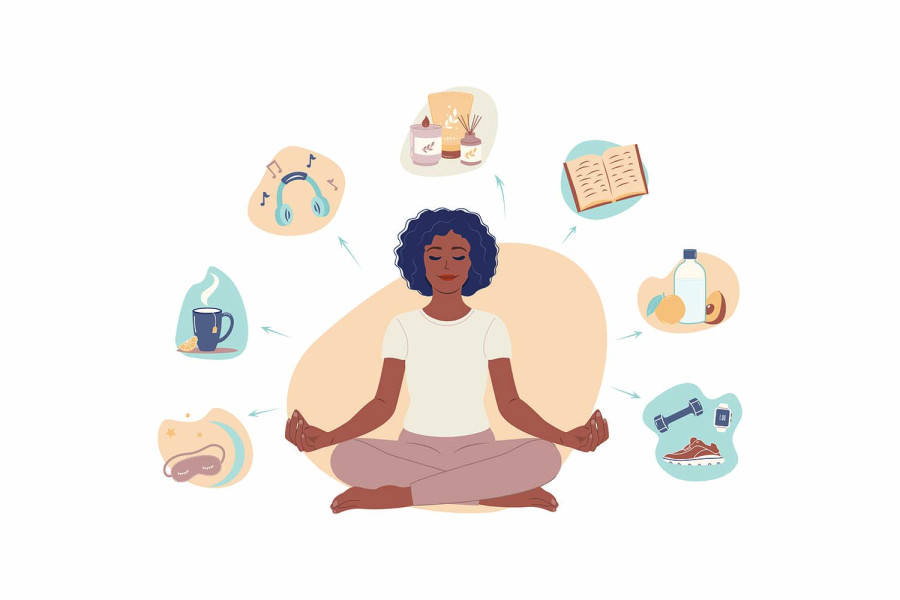Culture & Lifestyle
Why your self-care habits fade, and how to keep them alive
Emotional well-being requires intention, choosing to show up for yourself even when your mind says, ‘not today.’
Dristy Moktan
Have you ever wondered why sticking to a well-being practice is harder than expected?
Often, it’s because we begin with great enthusiasm, only to let the habit fade when life gets busy or challenging. At first, the motivation feels strong and the benefits are obvious, but as days pass, other priorities take over. We know these practices are good for us, yet they often get pushed aside, not because they’ve lost their value, but because we forget to make space for them.
If this resonates with you, and if you are in this exact phase where you need that extra little push, let this be your reminder: your emotional well-being deserves the same commitment you give to your physical health, work, or relationships. Embarking on an emotional well-being journey is never smooth. The basic science of forming any habit is clear: It takes time and consistent effort.
However, well-being practices present layered challenges beyond forming ordinary habits. Emotional well-being practices often bring us face-to-face with our inner world, that is, our thoughts, beliefs, and unprocessed feelings. This can feel uncomfortable and even confronting.
It takes courage to begin, but maintaining that consistency requires something deeper: the willingness to face yourself repeatedly, even on the days you would rather avoid it. Often, the biggest resistance comes from within. Our inner critic may dismiss our efforts as “pointless” or “too much work.” Old, suppressed beliefs may whisper that you are not “doing it right” or “don’t have time.” Over time, this affects our self-esteem and creates the illusion that it is easier to stop altogether.
But here is the truth. Emotional well-being practices are just as vital as physical health habits. If you can adapt to going to the gym or following a healthy diet because you know it is good for your body, you can adjust to emotional well-being routines because they are essential for your mind and heart. The process is the same. What is needed is a shift in perspective.
To simplify things, here are some of my favourite emotional well-being practices anyone can try. Remember that these practices are not about “fixing” yourself. They are about creating safe, nurturing moments for your emotions to be felt, processed, and supported.
Start with warmth: Drink warm water in the morning before caffeine. This simple act signals to your body and mind: I care for you.
Emotion check-in: Write a few lines about how you feel and how you want your day to unfold. Naming emotions helps regulate them.
Self-soothing touch: A gentle oil massage before your shower can be grounding and help release stored tension in the body.
Connection with nature: Step outside, soak in the morning sun, walk barefoot on grass, notice rainbow colours in flowers and plants around you, and if you are lucky, you might see other beautiful living creatures that share our earth. This nurtures feelings of belongingness.
Gentle movements: If a workout feels overwhelming, try gentle free-flow body shakes, allowing the body to move freely and incorporating soft joint-focused movements.
The best times to nurture these small habits are in the morning and evening. Mornings set the tone for the day, boosting emotional resilience before challenges appear, while evenings offer a chance to release tension and process the day’s experiences before rest.
To build consistency in emotional well-being, these two words can be your mantra: “conscious effort.” Unlike automatic tasks, emotional well-being requires intention, the choice to show up for yourself even when your mind says “not today.”
The 2-Minute Rule can be a game-changer for falling in love with these practices. Commit to just two minutes a day. The aim is not perfection, but presence. Even brief moments, like writing a single sentence in a journal or taking three mindful breaths, signal to your mind that you matter. This is about getting to know yourself better and discovering what works for you and what does not. Do not be disheartened if a practice does not feel right after weeks of trying. That is simply feedback that this particular habit is not for you. You can always try another. Over time, you will have a handful of well-being practices you want to carry on. Let this be exploration, not obligation.
Another is The 2-Day Rule. Promise to show up for at least two days before taking a break. Often, once you start, you will want to keep going. This soft structure helps prevent long gaps while permitting you to rest if needed.
Emotional well-being isn’t about removing challenges but building a strong inner foundation to face life with stability and grace. When practised consistently, small rituals become emotional anchors by reminding you of your worth, helping you pause before reacting, and allowing your nervous system to feel safe to process and release emotions.
Yes, showing up for yourself may be tough, but it is never impossible. Every time you make that conscious effort, even for a few minutes, remember that you are building foundational blocks for a more emotionally aware, resilient, and joyful life. Consistency is not about doing it perfectly every day. It is about returning to yourself again and again.




 8.12°C Kathmandu
8.12°C Kathmandu















